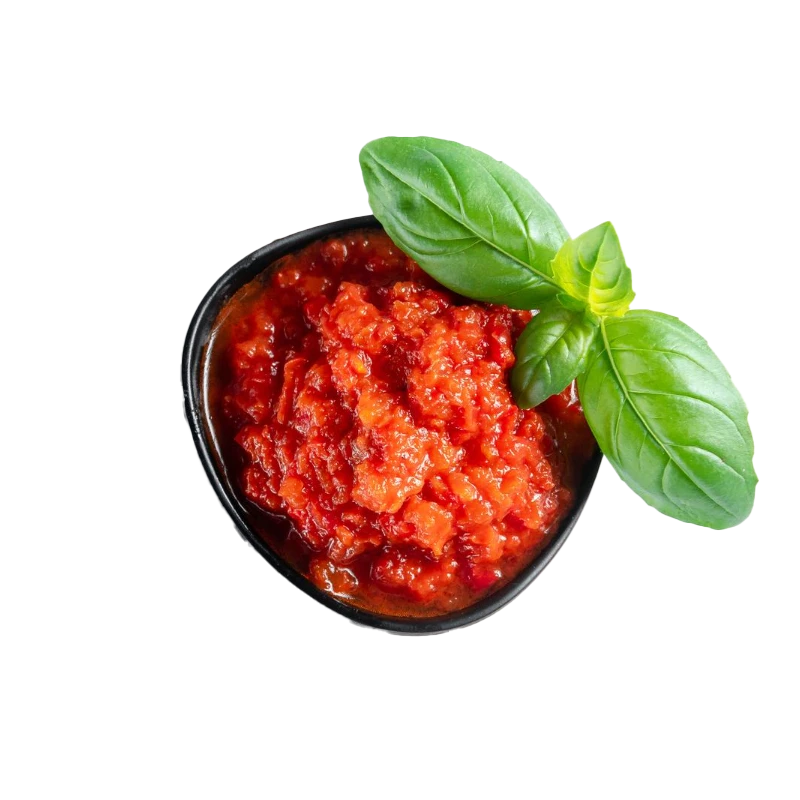Bolognese Sauce — Nutrients, Health Benefits, And Shopping Tips

Written by Listonic Team
Last update on September 4, 2024
Nutrients
Nutrition facts
Amount per 100 g
Calories
🔥 101 kcal
| Nutrition per: 100 g | Value | % Daily Value* |
|---|---|---|
| Carbs | 9 g | 3.27% |
| Fiber | 2 g | 7.14% |
| Sugars | 5 g | 10% |
| Glycemic Index | 50 | - |
| Protein | 6 g | 12% |
| Sodium | 410 mg | 17.83% |
| Total Fat | 5 g | 6.41% |
*The % of Daily Value (DV) tells you how much a nutrient in a serving of food contributes to a daily diet. 2,000 calories a day is used for general nutrition advice.
50
🟢 Low Glycemic Index
9 g
⬇️ Low Carb Content
Key takeaways
Health benefits
- Rich in protein from the meat, which is essential for muscle growth, repair, and overall body function.
- Contains vegetables such as tomatoes, onions, and carrots, which provide vitamins, minerals, and fiber, supporting overall health and digestive health.
- Provides antioxidants from tomatoes, which help protect the body from free radicals and reduce inflammation.
- Versatile and nutritious, offering a balanced combination of protein, fats, and carbohydrates when served with pasta or other grains.
- Can be a source of healthy fats if prepared with olive oil, which supports heart health.
Health risks
- High fat content particularly if made with fatty cuts of meat, which can contribute to increased cholesterol levels and heart disease risk.
- High sodium content especially in store-bought or canned versions, which can contribute to hypertension and increased cardiovascular risks.
- High calorie content which can contribute to weight gain if consumed in large quantities or paired with calorie-dense foods like pasta.
- Potential allergens such as dairy or gluten in certain recipes, which can cause allergic reactions in sensitive individuals.
How to choose bolognese sauce
Bolognese sauce should be rich, deep red in color with a thick consistency, signifying a good balance of tomatoes and meat. Prefer sauces with all-natural ingredients, with beef and tomatoes topping the list.
Steer clear of sauces that heavily rely on artificial flavors, colors, or preservatives. Watery or overly sweet sauces indicate low quality and detract from the dish's traditional richness.

How to store bolognese sauce
Bolognese sauce should be refrigerated in an airtight container and used within a few days. Freezing is an excellent option for longer storage, where it can last up to three months. Properly sealed, bolognese sauce maintains its flavor and quality.
Leaving the sauce at room temperature can lead to spoilage, so it should be avoided. Reheating multiple times can degrade the sauce's quality and safety. Thawing frozen sauce in the refrigerator ensures it remains safe to eat and retains its texture.
✅ Extra Tip
How long does it last?
Bolognese sauce can last for 3-4 days in the refrigerator. For longer storage, it can be frozen for up to 2-3 months. Ensure it is stored in an airtight container to maintain its flavor and quality.
What to do with leftovers?
Leftover Bolognese sauce can be used in a variety of Italian-inspired dishes. Toss it with your favorite pasta for a quick and comforting meal, or layer it in a lasagna with ricotta and mozzarella cheese. Bolognese sauce is also great as a filling for stuffed peppers or baked into a casserole with pasta and cheese.
Use Bolognese sauce as a topping for pizzas or mix it into a pasta bake with penne or rigatoni. If you have a lot of sauce, consider using it in a meatball sub or mixing it into a sloppy joe filling for a twist on the classic sandwich. Bolognese can also be served over polenta or mashed potatoes for a hearty, comforting dish. For a quick meal, spoon the sauce over roasted vegetables or use it as a filling for savory crepes or stuffed shells.
👨⚕️️ Medical disclaimer
Discover products from other categories
Listonic Team
Fact-checked
Our editorial team checked this article to make sure it was accurate at the time of publishing it.
Get the top-rated shopping list app on your phone!







